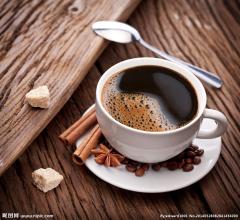Introduction to the quality characteristics of Solar G1 Ethiopia Sidamo Coffee Bean Flavor description treatment
Introduction of Ethiopian Coffee beans
1. After picking beans without special screening and treatment, uneven appearance and maturity are mixed together, the process is relatively rough, so the quality of coffee beans is unstable and prone to defective beans.
two。 Coffee farmers usually find an open space near their home to deal with it, so there are often a lot of impurities or dirt on the ground, and coffee is easy to get smelly.
The improved method of tanning, that is, to improve the two shortcomings of the traditional way:
1. When picking beans, only fully ripe crimson coffee cherries are picked. Before exposure, the beans will be screened for defects in the processing plant to make the beans look more average in size and maturity.
two。 Next, use tall wooden frames or whole scaffolding for the sun to avoid the risk of beans smelling on the ground. In the process of exposure, take good care of the beans so that the coffee beans can be evenly exposed to water; every three to five days, coffee workers will manually screen out defective and moldy beans. Therefore, by the end of the exposure, before the beans enter the market to remove the peel and flesh, a bright crimson coffee cherry is already a grade with few defects.
After obtaining the raw coffee beans, sometimes in order to pursue the perfect taste, the final screening will be done, so this sunny sidamo can reach the highest level of G1.
Introduction of the producing area:
Shakisso is located in the southern part of Guji and Oromia, adjacent to Sidama and Gedeo. There are many pits in this area, which were used to mine gold in the early days, so there are many potholes in this coffee growing area. This makes people dangerous when walking between coffee growing areas. Shakiso is a unique producing area of Guji / Cedamory, even in Cedamori, which is a remote area away from most coffee producing areas, and another famous local product is gold. Miners, land, race and other factors also caused unrest in the region in 2006. As a result, the biggest problem facing the region now is that ─ needs manpower to maintain the growing area and harvest coffee. Local small farmers began to grow organic coffee in 2001 and work closely with medium-sized coffee producers because they know how to grow forest coffee in the highlands.
Water-washed coffee flavor is not easy to have wild flavor, with pure, refreshing characteristics, suitable for City to Full City baking degree; some essential excellent Ethiopian water-washed coffee beans, sometimes can be detected obvious rising lemon, citrus essential oil, jasmine, honey and so on, the sour taste is obvious, mellow and thin. All kinds of mocha beans treated in the sun have wild flavor in the basic flavor, but the degree is more or less different, so it is more suitable for the baking degree from Full City to Vienna. The essence of the excellent sun, mocha beans, its tail will have a clear Hey chocolate flavor, some have a delightful blueberry-like fermented fruit and red wine texture
Yejia Xuefei can be divided into two categories according to the different ways of handling raw coffee beans:
Category An is the washing method, and the grade standard is formulated by the American Fine Coffee Society SCAA, which is divided into Gr-1;Gr-2. The smaller the Arabic numeral is, the higher the grade is. The style of G1 Yega Chuefei is distinct, and the flavor of citrus and floral flavor in the coffee liquid is a delicious taste that everyone can't resist.
Category B is sun-treated coffee raw beans, and the grade is Gr-1;Gr-3;Gr-4;Gr-5. Similarly, the highest grade of G1 sun Yega Chuefei is fruity. Opening the freshly roasted G1 sun Yega Chevy coffee bag can subvert people's original understanding of coffee. Only those who have tasted the highest grade sun Yega Chevy will believe that coffee is a kind of fruit.

Important Notice :
前街咖啡 FrontStreet Coffee has moved to new addredd:
FrontStreet Coffee Address: 315,Donghua East Road,GuangZhou
Tel:020 38364473
- Prev

Introduction to the quality characteristics of Yunnan small Coffee Flavor description treatment
The western and southern parts of Yunnan Province are located between 15 N and the Tropic of Cancer. Most of the areas are 1000-2000 meters above sea level. The topography is dominated by mountains and slopes. Here, the land is fertile, the sunshine is sufficient, the rainfall is abundant, and the temperature difference between day and night is large. The unique natural conditions form the special taste of Yunnan small-grain coffee, which is rich but not bitter, fragrant but not strong, slightly fruity. In the south and west of Yunnan
- Next

Introduction to the quality characteristics of the flavor description treatment of the world's top blue mountain coffee produced in Jamaica
The earliest origin of Jamaica's production of the world's top Blue Mountain Coffee can be traced back to the decision of an 18th century French king. In 1723, King's Road XV sent coffee seeds to the French colony of Martinique, which is located 1900 kilometers southwest of Jamaica and has fertile soil. Five years later, in 1728, Nicholas Rawls, the governor of Jamaica, received a message from Ma.
Related
- Detailed explanation of Jadeite planting Land in Panamanian Jadeite Manor introduction to the grading system of Jadeite competitive bidding, Red bid, Green bid and Rose Summer
- Story of Coffee planting in Brenka region of Costa Rica Stonehenge Manor anaerobic heavy honey treatment of flavor mouth
- What's on the barrel of Blue Mountain Coffee beans?
- Can American coffee also pull flowers? How to use hot American style to pull out a good-looking pattern?
- Can you make a cold extract with coffee beans? What is the right proportion for cold-extracted coffee formula?
- Indonesian PWN Gold Mandrine Coffee Origin Features Flavor How to Chong? Mandolin coffee is American.
- A brief introduction to the flavor characteristics of Brazilian yellow bourbon coffee beans
- What is the effect of different water quality on the flavor of cold-extracted coffee? What kind of water is best for brewing coffee?
- Why do you think of Rose Summer whenever you mention Panamanian coffee?
- Introduction to the characteristics of authentic blue mountain coffee bean producing areas? What is the CIB Coffee Authority in Jamaica?

